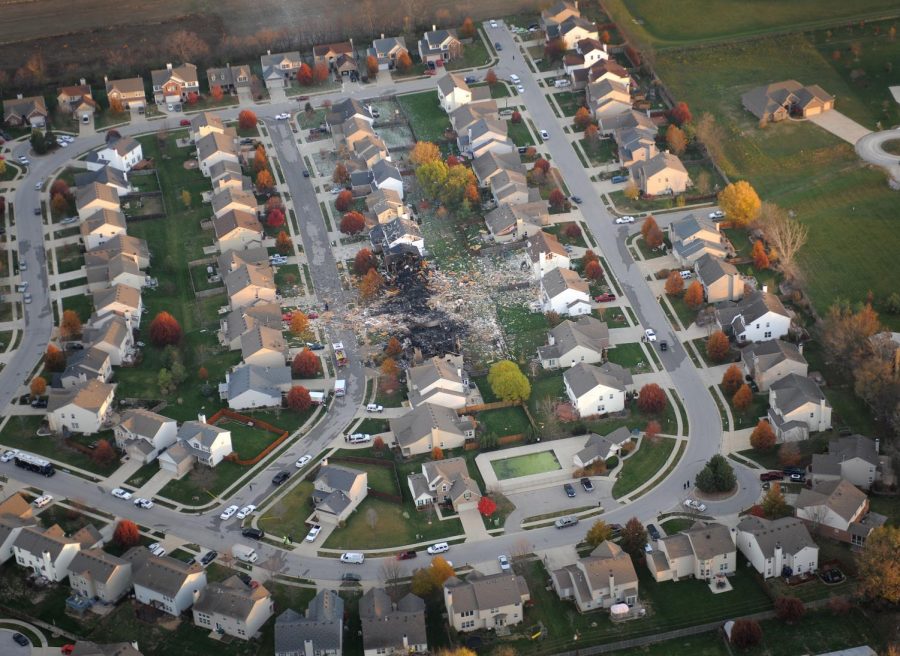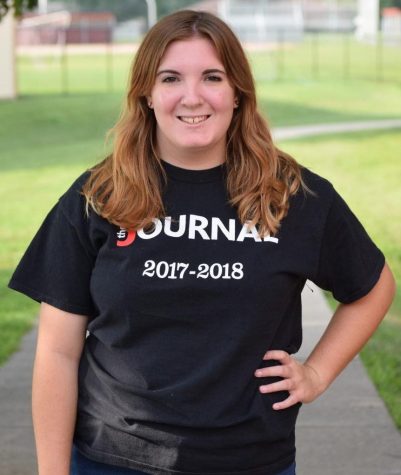After the blast
Explosion still affects students five years later
The house explosion that rocked the Richmond Hills neighborhood killed two people, caused millions of dollars in damage and left affects on SHS students.
November 10, 2017
That night…
Junior Chaz Hinds was tuned into a Notre Dame football game late on the night of Nov. 10,2012 when it happened.
“All of the sudden, my house shook,” said Hinds, now an SHS junior.
The explosion that rocked Hinds’ neighborhood, Richmond Hills, took him and the entire Southside community by surprise.
He initially thought an earthquake was happening, but he realized that earthquakes are rare in Indiana. He then knew it was something bad.
“I could hear things crashing,” Hinds said. “I saw things falling off of the ceiling (and) shelves as I sprinted to my mom’s room.”
Four houses down, junior Haley Cox was getting up to use the restroom when the snow globes in her room began to fall. She then alerted her mother.
“And then (she) asked me to call 911,” Cox said.
Both Hinds and Cox do not recall hearing the explosion.
“After that, (we) were trying to figure out what was going on,” Cox said. “My dog ran out of the house, and we couldn’t get her to come back in.”
They later found out that their dog had passed away from impact during the explosion.
Hinds gathered with his family to evacuate the house.
“We went to go out of the front door, and it was blown in,” Hinds said.
Hinds and his family had to push open their garage door in order to get out.
“I looked up and saw a giant mushroom cloud, smoke and fire,” said Hinds. “It was like I was in a war zone. It was like I was in a World War II movie.”
That night left long-lasting effects on the properties of the neighborhood, the first responders and especially
the families.
“We went outside, and neighbors were running towards us. All I saw was flames. It was four doors down from us,” Cox said.
Cox’s father, a Greenwood firefighter, took off toward the fire to help others after safely getting out of the house with his family.
Police officers were telling residents to stay in their homes until further notice because the fire was spreading. However, according to Cox, their house was falling apart, and there was no way to get back in.
“The south wall of our house came almost completely detached,” Cox said.
When Hinds’ family realized there was an explosion, they decided to run in and get all of their important belongings such as their phones, wallets and pets. They then decided to get in the car and drive to the front of the neighborhood.
“(Driving out) took forever because everyone in the neighborhood was running out of their houses,” Hinds said. “There were millions of fire trucks and police cars.”
As authorities gathered more information, police told residents to report to Mary Bryan Elementary School. Hinds and his family drove there, and Cox’s family walked. Cox got there before the doors opened, and waited in a police car.
According to Hinds and Cox, once people arrived at the school, there was a check-in area. There, families were asked to give their address along with some other information.
Hinds was glad to see his friends and neighbors once he got there. People were on their phones, hugging one another and talking among themselves.
Phone calls even came in, according to Cox, from the owners of the house where the explosion occurred.
“They were calling because they were…watching the news, and they wanted to make sure everybody was OK and to tell us that they weren’t in the house,” Cox said.
Those calls turned out to be sinister. Information was later released stating that the natural gas explosion was intentionally set by the homeowners, Monserrate Shirley and Mark Leonard, to collect insurance money. The devastation has since been featured on CNBC’s show “American Greed.”
Despite the destruction their house suffered that night, the Hinds’ family was able to return and live in their home soon after. However, the Cox family was not as lucky. Their house was soon to be leveled. Their grandmother came to pick them up that night from the school. They lived with her for the next two weeks.
The Following weeks…
According to Cox, bottles of water and other donations were brought to Mary Bryan after the explosion. They were also able to go shopping to get needed supplies, which were donated.
A local church, Southport Presbyterian, held many gatherings to bring the community together.
“We had meals there where people would donate food and invite us to eat,” Cox said.
According to Hinds, a vigil was held for the two people who died as a result of the explosion.
“(The church) helped out a bunch there,” Hinds said.
Hinds returned to school a few days after the bombing happened. Due to the trauma, Cox and her brother stayed home for the following couple of weeks.
Hinds says SMS also helped with the situation by being supportive of students.
“If we needed anyone to talk to, they were there. It wasn’t a ton, but (the guidance office) did call us down to make sure we were OK,” Hinds said.
The middle school held a jeans day to raise money for the neighborhood. According to Cox, Christmas presents were also donated to their family.
“We obviously didn’t have anything. Southport Middle donated clothes to us, and pretty much all of my teachers (said), ‘You don’t have to do any of your make-up work. Just get back to school whenever you (can),’” Cox said.
Lingering Effects…
Cox and her family have struggled with memories of the explosion. Just being four doors down, the blast did enough damage to categorize the Cox home as uninhabitable. The officials allowed them to take two hours to get everything they could out of their house due to the unstable foundation.
According to Cox, both she and her mother have had difficulties sleeping at night when there are storms.
“Loud noises still bother us and give us flashbacks,” Cox said, “like fireworks, fire alarms (and) thunder.”
Cox, however, says the major triggers she once experienced after the explosion aren’t nearly as intense today. The Cox family now has a new house and a new family pet.
Due to the explosion, the Cox family along with many others have suffered from traumatic stress.
Psychologist Kelly Miller says those who undergo traumatic stress “may avoid situations that remind them of some things.”
For example, one of the effects the tragedy had on Hinds was not being able to watch explosions on T.V. because it would bring back bad memories. He also said the explosion affected where he wanted to go in his house.
“When it happened, I was upstairs,” Hinds said, “and I couldn’t go upstairs for like a month. I don’t know what the reason was. It just kind of weirded me out.”
He slept either on the couch or in his mom’s room to recollections of the blast.
Now he says, there are only little things that may bring him back to that night.
Sophomore Colby Cocherell was the closest to the explosion out of the three families, being just three houses down from the bombing. The damage to the foundation of his house was so severe that a thunderstorm could have knocked the whole thing down, according to Cocherell. His older brother Hunter and their father were out of town that night. This left Cocherell and his mother alone to vacate their house.
For Cocherell, things such as fireworks appeared different to him because of the explosion. He began to recover when the houses were being rebuilt and there was less of a visual reminder.
“For the first year or so,” Cocherell said, “when we had to stay in an apartment, I think I did (have traumatic stress) because I’d hear doors close that were loud, and it just kind of scared me.”
Miller also confirms that “for some, over time all of those feelings and that traumatic stress can start to fade, and life returns back to normal” such as Cocherell’s progressive recovery.



